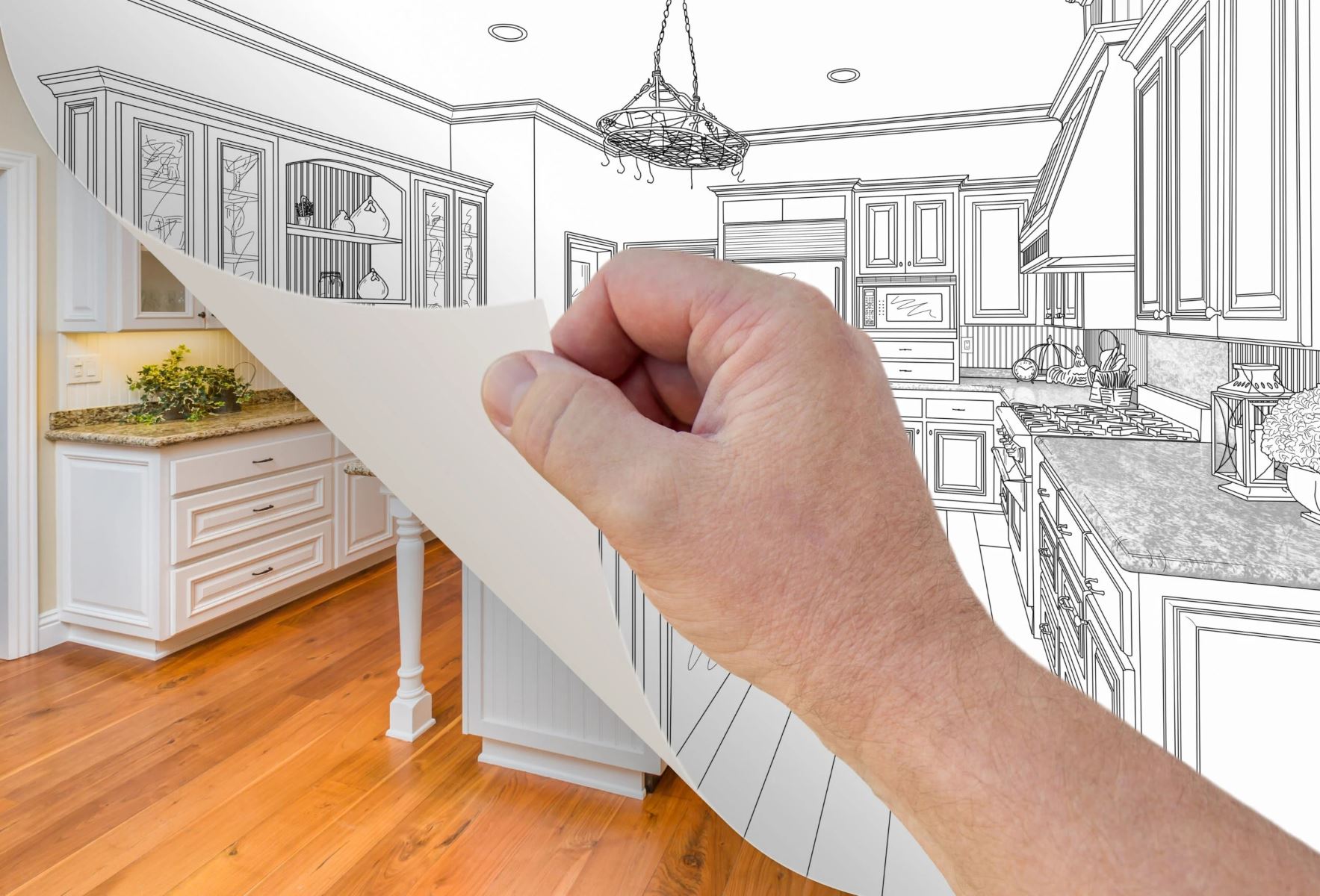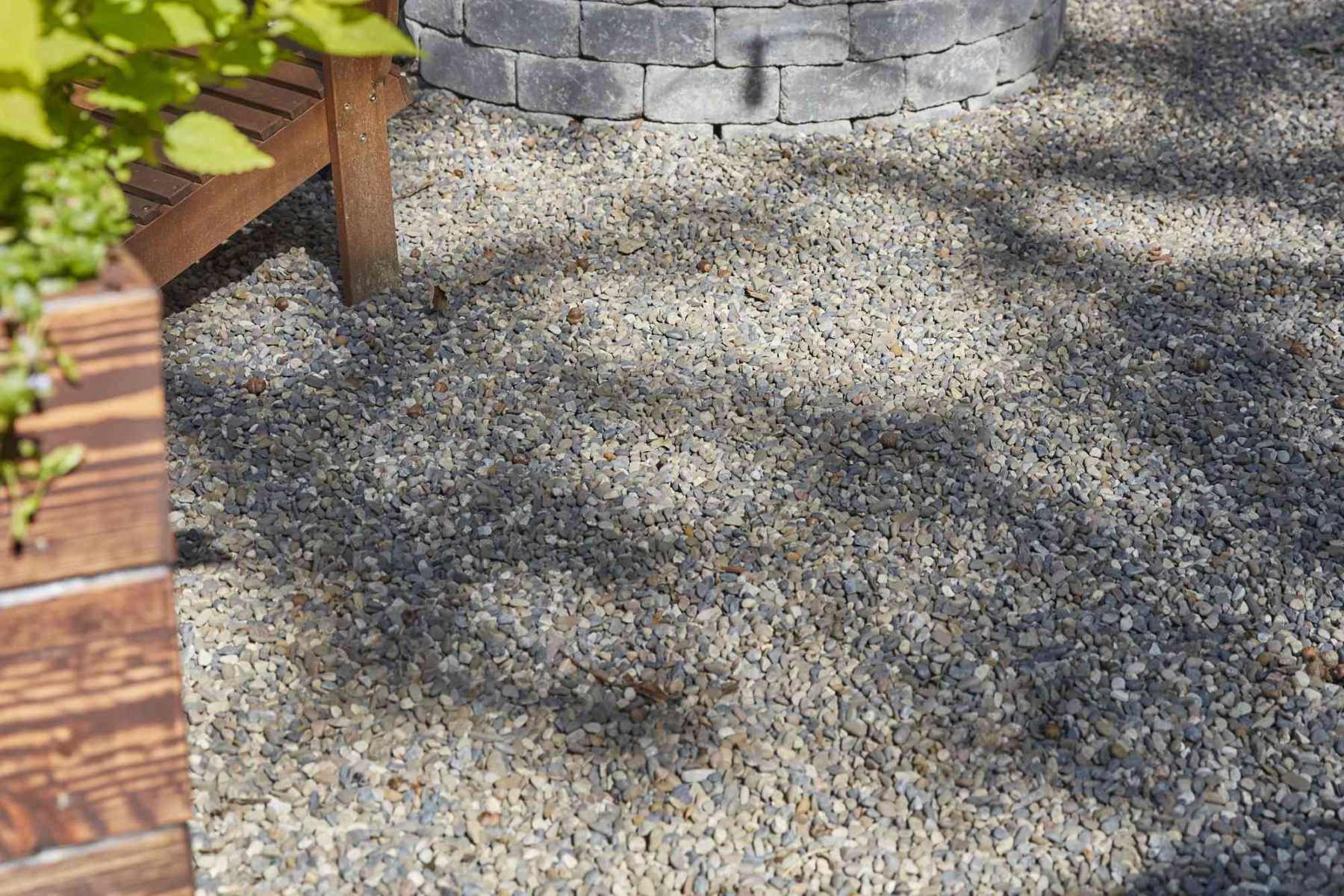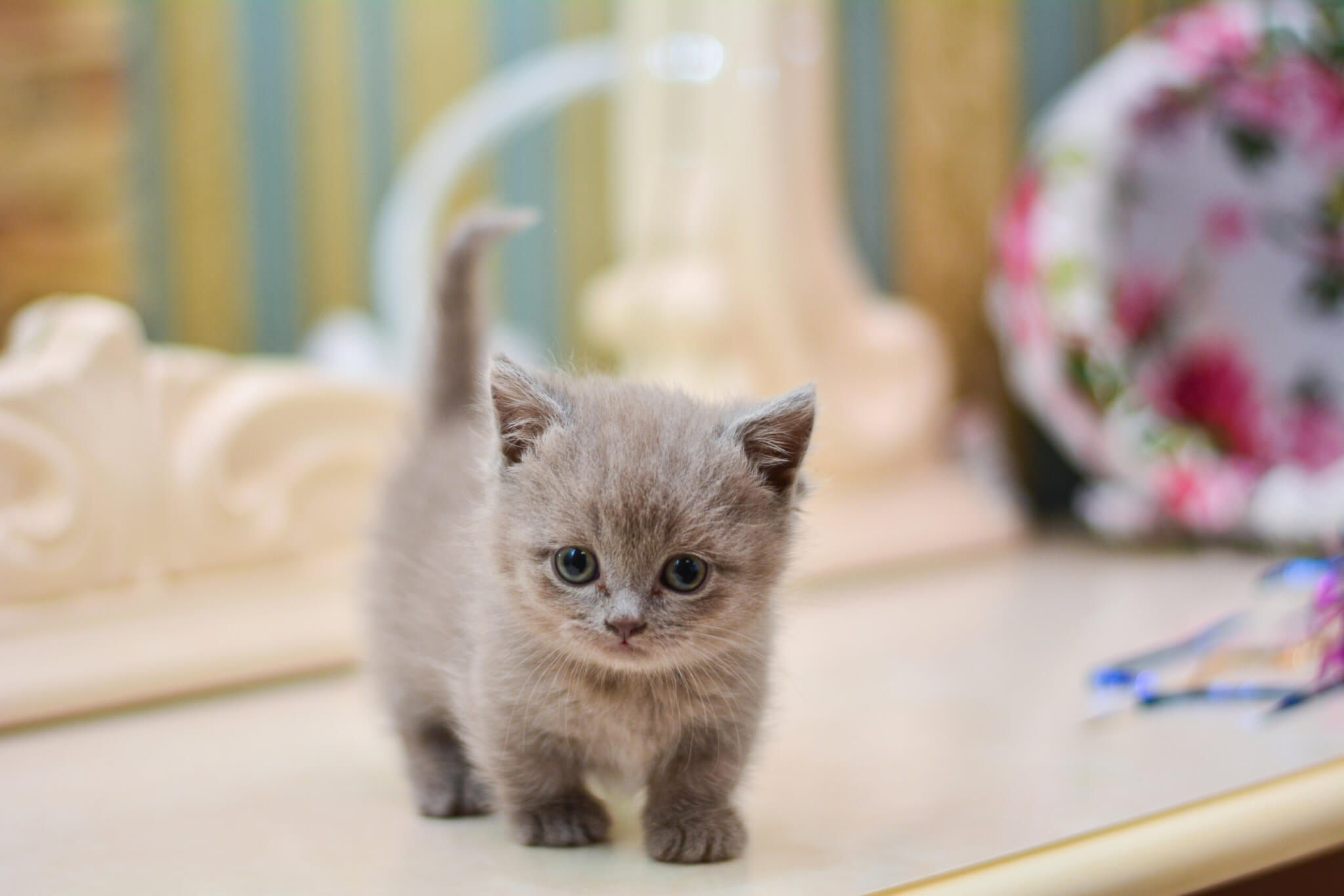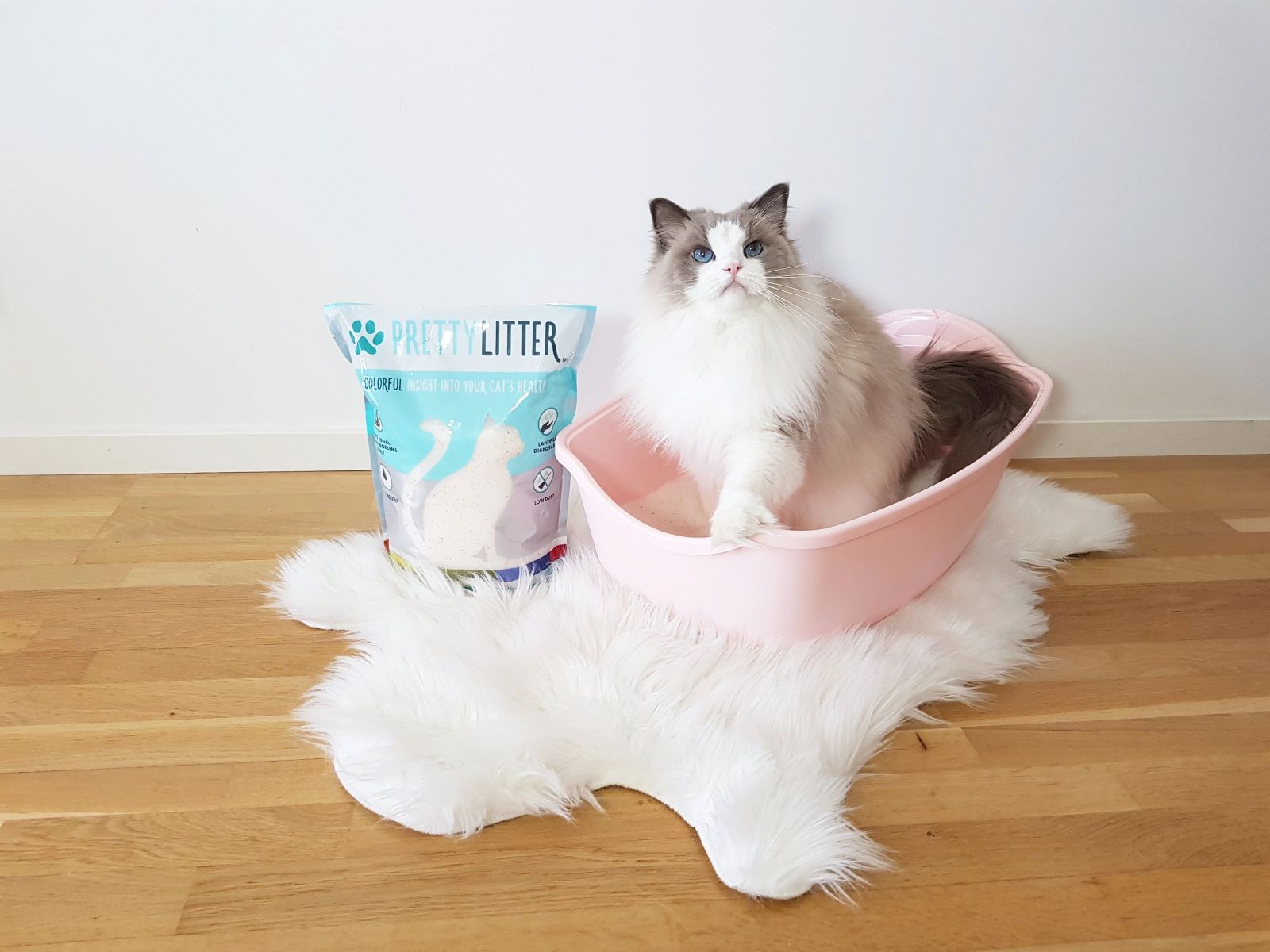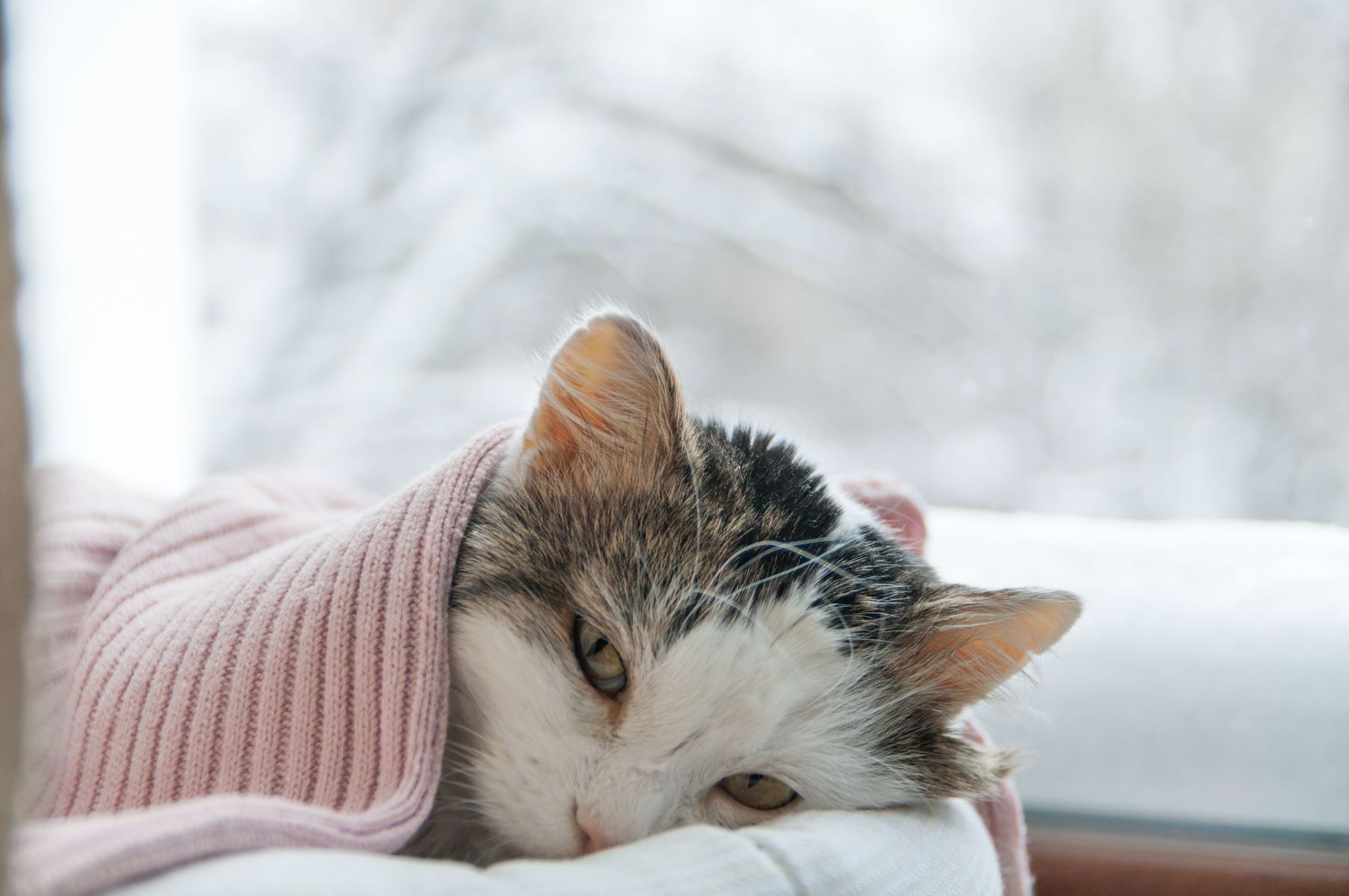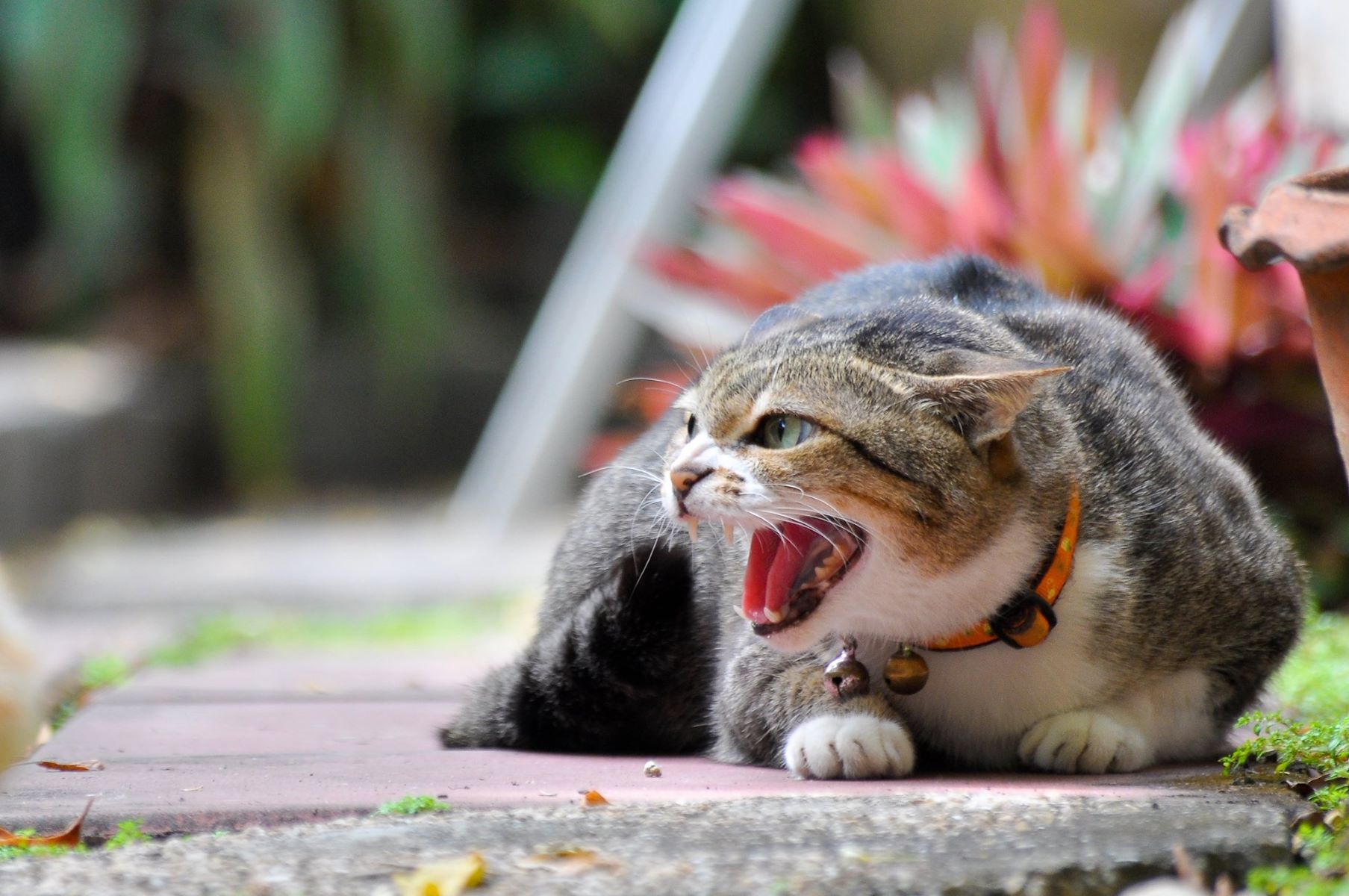Home>Pets & Animals>The Ultimate Guide To Punishing A Cat For Peeing In The House
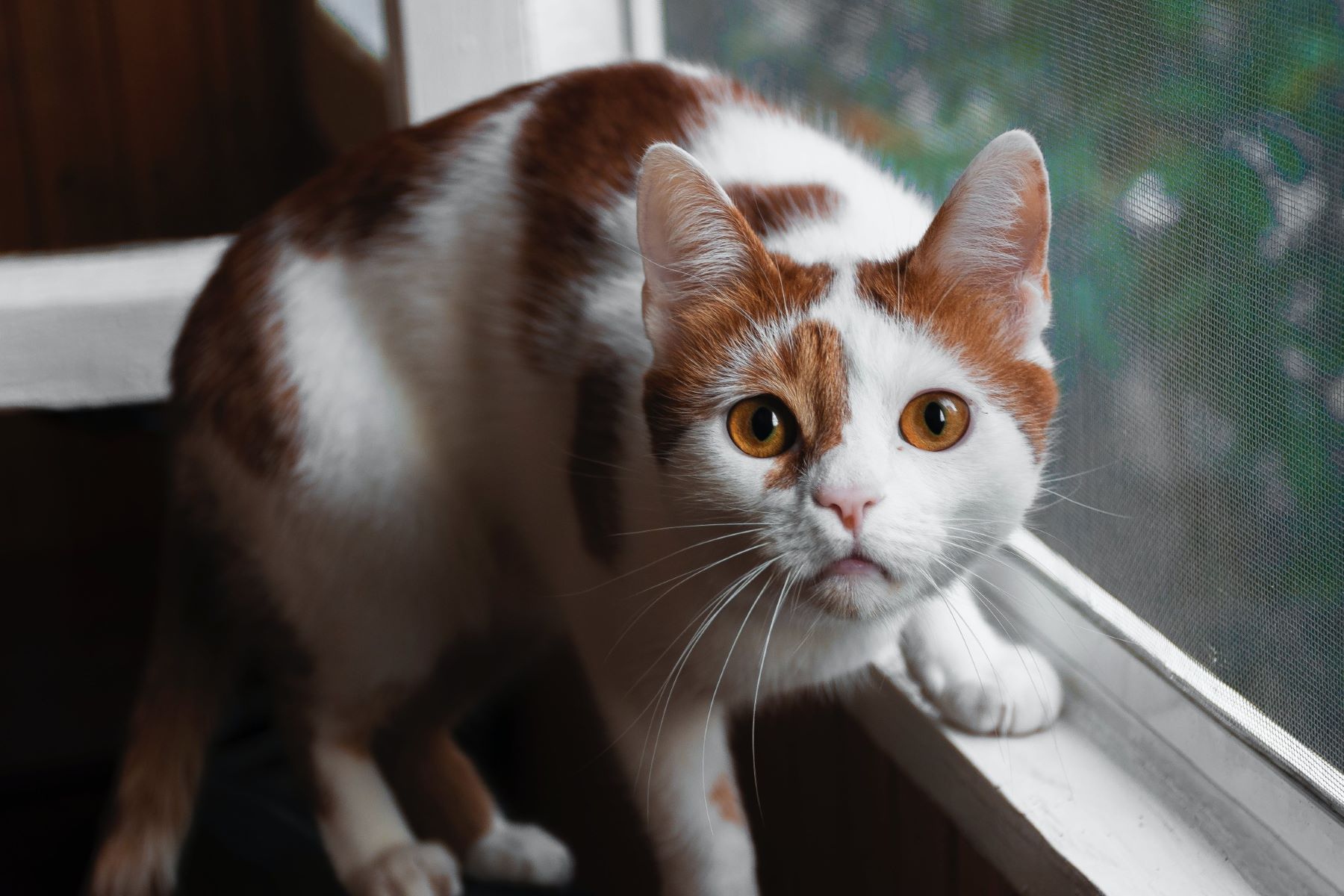

Pets & Animals
The Ultimate Guide To Punishing A Cat For Peeing In The House
Published: February 18, 2024
Discover effective ways to discourage your cat from peeing in the house with our comprehensive guide. Find expert tips and advice for pet owners.
(Many of the links in this article redirect to a specific reviewed product. Your purchase of these products through affiliate links helps to generate commission for Regretless.com, at no extra cost. Learn more)
Table of Contents
Introduction
Dealing with a cat that pees in the house can be a frustrating and perplexing experience for many feline parents. It's not uncommon to feel overwhelmed and unsure of how to address this issue effectively. However, it's important to approach the situation with empathy and understanding. Cats are complex creatures, and inappropriate elimination can stem from a variety of physical, environmental, or behavioral factors. As a responsible pet owner, it's crucial to delve into the root causes of this behavior and implement appropriate strategies to address it.
In this comprehensive guide, we will explore the various reasons why a cat may be peeing in the house, ranging from medical issues to environmental stressors. By understanding the underlying factors contributing to this behavior, you can take proactive steps to create a safe and comfortable environment for your feline companion. Additionally, we will delve into the importance of positive reinforcement and how it can be used to encourage proper elimination habits. Furthermore, we will discuss the controversial topic of implementing punishments for inappropriate elimination, providing insights into the potential risks and benefits of this approach.
By the end of this guide, you will have a deeper understanding of the complex nature of feline behavior and the tools necessary to address inappropriate elimination effectively. Remember, patience and empathy are key when navigating this challenging situation. Let's embark on this enlightening journey to better understand and support our beloved feline friends.
Understanding Why Your Cat is Peeing in the House
Understanding the underlying reasons behind a cat's inappropriate elimination is crucial for effectively addressing this behavior. Cats may exhibit this behavior due to various factors, including medical issues, environmental stress, and behavioral challenges. One common cause of house soiling is feline lower urinary tract disease (FLUTD), which encompasses a range of conditions affecting the bladder and urethra. Symptoms of FLUTD include frequent urination, straining to urinate, and blood in the urine. Additionally, urinary tract infections, bladder stones, and other urinary tract disorders can contribute to a cat's decision to urinate outside the litter box.
Environmental stressors can also prompt a cat to urinate inappropriately. Cats are highly sensitive to changes in their surroundings, and factors such as moving to a new home, introducing a new pet, or experiencing household disruptions can lead to stress-induced elimination problems. Furthermore, inadequate litter box maintenance, such as infrequent cleaning or using scented litter that a cat finds aversive, can deter a cat from using the litter box.
Behavioral issues, such as marking territory or expressing discontent, can also manifest as urinating outside the litter box. Unneutered male cats are particularly prone to marking their territory by spraying urine, while conflicts with other pets or perceived threats to their territory can lead to territorial marking.
Understanding the root cause of a cat's inappropriate elimination requires careful observation and, in some cases, consultation with a veterinarian to rule out medical issues. By identifying the specific triggers prompting this behavior, pet owners can take targeted steps to address the underlying causes and create a conducive environment that promotes proper litter box usage.
In the next sections, we will delve into strategies for addressing medical issues, creating a comfortable litter box environment, and employing positive reinforcement to encourage proper elimination habits. By holistically approaching the issue of inappropriate elimination, pet owners can work towards fostering a harmonious and stress-free environment for their beloved feline companions.
Addressing Medical Issues
Addressing potential medical issues is a crucial first step in addressing a cat's inappropriate elimination behavior. Cats may exhibit house soiling as a result of various urinary tract disorders, infections, or other medical conditions. Feline Lower Urinary Tract Disease (FLUTD) is a common concern, encompassing a spectrum of conditions that affect the bladder and urethra. Symptoms of FLUTD include frequent urination, straining to urinate, and blood in the urine. Additionally, urinary tract infections, bladder stones, and urinary tract obstructions can contribute to a cat's decision to urinate outside the litter box.
When a cat demonstrates inappropriate elimination, it is essential to seek prompt veterinary attention to rule out potential medical causes. A thorough physical examination and diagnostic tests, such as urinalysis, blood work, and imaging studies, may be necessary to identify underlying medical issues. Once a medical condition is diagnosed, appropriate treatment, which may include medication, dietary changes, or surgical intervention, can be initiated to address the cat's health concerns.
In cases of urinary tract infections, antibiotics are commonly prescribed to combat the underlying bacterial infection. For urinary obstructions, immediate medical intervention, such as catheterization or surgery, may be required to alleviate the blockage and restore normal urinary flow. Dietary modifications, such as switching to a specialized urinary care diet, can help manage certain urinary tract disorders and prevent recurrence.
Furthermore, it's important to ensure that the cat's overall health and well-being are optimized. Adequate hydration is essential for maintaining urinary tract health, so providing access to fresh water and incorporating wet food into the cat's diet can promote proper hydration. Additionally, maintaining a stress-free environment and minimizing environmental triggers can support the cat's recovery and reduce the likelihood of recurring inappropriate elimination behavior.
By addressing potential medical issues and providing appropriate veterinary care, pet owners can effectively alleviate any discomfort or health concerns contributing to their cat's inappropriate elimination. This proactive approach not only supports the cat's well-being but also sets the foundation for addressing behavioral and environmental factors that may be influencing the cat's litter box habits.
In the subsequent sections, we will delve into creating a safe and comfortable litter box environment and using positive reinforcement to encourage proper elimination, further enhancing the holistic approach to addressing inappropriate elimination behavior in cats.
Creating a Safe and Comfortable Litter Box Environment
A safe and comfortable litter box environment plays a pivotal role in promoting proper elimination habits and mitigating the likelihood of inappropriate urination in cats. When addressing litter box issues, it's essential to consider various factors that can influence a cat's litter box preferences and behaviors. By creating an inviting and stress-free environment for your feline companion, you can encourage consistent litter box usage and minimize the occurrence of house soiling incidents.
Location and Accessibility
The placement of the litter box is a critical consideration when aiming to create an optimal elimination environment for your cat. The litter box should be strategically located in a quiet, easily accessible, and low-traffic area of your home. Cats value privacy and may feel reluctant to use a litter box placed in a high-traffic or noisy location. Additionally, having multiple litter boxes in different areas of the house, especially in multi-level homes, can provide cats with convenient access to a designated elimination area, reducing the likelihood of accidents.
Litter Box Type and Maintenance
Selecting the appropriate litter box and litter type is essential for meeting your cat's preferences and promoting regular litter box usage. Cats may have individual preferences for litter box styles, such as open, covered, or top-entry boxes. It's beneficial to observe your cat's behavior and preferences to determine the most suitable litter box style. Additionally, maintaining a clean litter box environment is crucial. Regular scooping and cleaning of the litter box not only promote hygiene but also ensure that the litter box remains appealing to your cat.
Litter Substrate and Depth
The choice of litter substrate and its depth can significantly impact a cat's litter box experience. Cats may have preferences for certain litter textures, such as clumping, non-clumping, silica gel, or natural-based litters. Experimenting with different litter types can help identify your cat's preferences. Furthermore, providing an adequate depth of litter, typically around 2 inches, allows cats to exhibit natural digging behaviors and provides a comfortable surface for elimination.
Environmental Enrichment
Enhancing the litter box environment with environmental enrichment can further promote positive litter box associations for your cat. Placing the litter box near a window or incorporating calming pheromone diffusers in the vicinity can create a soothing and inviting atmosphere. Additionally, ensuring that the litter box area is free from potential stressors, such as loud appliances or abrupt noises, contributes to a tranquil elimination environment.
By prioritizing the creation of a safe, comfortable, and inviting litter box environment, pet owners can empower their feline companions to develop consistent and positive litter box habits. This proactive approach, combined with addressing potential medical issues and employing positive reinforcement techniques, forms a comprehensive strategy for effectively managing and preventing inappropriate elimination behavior in cats.
Using Positive Reinforcement to Encourage Proper Elimination
Positive reinforcement is a powerful tool for shaping a cat's behavior and fostering desirable habits, including consistent and appropriate elimination in the litter box. By utilizing positive reinforcement techniques, pet owners can create a supportive and encouraging environment that motivates their feline companions to use the designated elimination area, ultimately reducing the likelihood of house soiling incidents.
Establishing Positive Associations
Creating positive associations with the litter box is fundamental to reinforcing proper elimination behaviors in cats. When a cat uses the litter box, offering verbal praise, gentle petting, or small, healthy treats can convey positive reinforcement. By associating the act of using the litter box with pleasant experiences, cats are more likely to repeat this behavior, reinforcing the desired elimination habits.
Timing and Consistency
Consistency and timely reinforcement are crucial components of positive reinforcement training. It's essential to provide immediate reinforcement when the cat uses the litter box, as this strengthens the association between the behavior and the positive stimulus. Consistent reinforcement each time the cat uses the litter box reinforces the desired behavior, gradually establishing a routine of proper elimination.
Avoiding Negative Reinforcement
In the process of using positive reinforcement to encourage proper elimination, it's important to avoid negative reinforcement or punishment-based approaches. Negative reactions, such as scolding or physical punishment, can create anxiety and aversion towards the litter box, potentially exacerbating inappropriate elimination behaviors. Instead, focusing on positive reinforcement cultivates a supportive and nurturing environment that promotes trust and cooperation between the cat and the pet owner.
Enrichment and Play
Incorporating environmental enrichment and interactive play near the litter box area can further reinforce positive associations. Providing engaging toys, scratching posts, or interactive feeding puzzles in proximity to the litter box creates a positive and stimulating environment, encouraging the cat to view the litter box area as a comfortable and enjoyable space.
Patience and Persistence
Positive reinforcement requires patience and persistence, especially when addressing inappropriate elimination behaviors that may have become ingrained over time. Consistently applying positive reinforcement techniques and maintaining a supportive environment can gradually reshape the cat's elimination habits, leading to more consistent and appropriate litter box usage.
By integrating positive reinforcement into the overall strategy for addressing inappropriate elimination, pet owners can effectively encourage proper elimination behaviors while nurturing a strong bond with their feline companions. This approach, combined with addressing potential medical issues and creating a comfortable litter box environment, forms a holistic and compassionate framework for supporting cats in developing and maintaining healthy elimination habits.
Implementing Punishments for Inappropriate Elimination
When addressing inappropriate elimination in cats, the topic of implementing punishments is a contentious and complex issue within the realm of feline behavior management. While the instinctive reaction may be to reprimand or apply punitive measures in response to house soiling incidents, it's crucial to approach this aspect with careful consideration and awareness of the potential implications.
It's important to acknowledge that cats do not respond to punishments in the same manner as some other pets might. Unlike dogs, cats do not inherently associate punishment with their actions, especially after the fact. In fact, punitive measures such as yelling, physical discipline, or isolation can lead to heightened stress and anxiety in cats, potentially exacerbating inappropriate elimination behaviors. Cats may perceive punishment as a source of fear or threat, leading to a breakdown in trust and a strained human-feline relationship.
Furthermore, punishment-based approaches do not address the underlying reasons for inappropriate elimination. Cats may be driven to urinate outside the litter box due to medical issues, environmental stressors, or behavioral challenges. Punishments do not effectively mitigate these root causes and may result in heightened anxiety, avoidance behaviors, or further instances of house soiling.
Instead of punitive measures, a more effective and humane approach involves focusing on positive reinforcement and addressing the underlying factors contributing to the inappropriate elimination. By creating a safe and comfortable litter box environment, addressing potential medical issues, and utilizing positive reinforcement techniques, pet owners can proactively encourage proper elimination behaviors while fostering a supportive and nurturing environment for their cats.
It's essential to recognize that cats thrive in environments characterized by patience, understanding, and positive reinforcement. By reframing the approach to behavior management and emphasizing positive reinforcement, pet owners can cultivate a harmonious and trusting relationship with their feline companions, ultimately promoting long-term behavioral wellness and a positive household dynamic.
In summary, while the concept of implementing punishments for inappropriate elimination may initially seem intuitive, it's crucial to prioritize compassionate and constructive approaches that prioritize the well-being and emotional health of our feline friends. By embracing positive reinforcement and holistic behavior management strategies, pet owners can navigate the challenges of inappropriate elimination with empathy and understanding, ultimately fostering a supportive and enriching environment for their beloved cats.
Conclusion
In conclusion, addressing a cat's inappropriate elimination behavior requires a multifaceted and compassionate approach that prioritizes the well-being and emotional health of our feline companions. By delving into the complex interplay of medical, environmental, and behavioral factors contributing to house soiling incidents, pet owners can gain valuable insights into the nuanced nature of feline behavior and implement targeted strategies to support their cats.
Understanding the diverse reasons behind a cat's decision to urinate outside the litter box, ranging from medical conditions such as FLUTD to environmental stressors and behavioral challenges, underscores the importance of thorough observation and, when necessary, veterinary consultation to identify and address underlying issues. By prioritizing the creation of a safe and comfortable litter box environment, pet owners can empower their cats to develop positive litter box associations and consistent elimination habits.
Furthermore, the utilization of positive reinforcement techniques, characterized by patience, consistency, and the establishment of positive associations, forms a pivotal component of addressing inappropriate elimination. By fostering a nurturing and supportive environment, pet owners can encourage their cats to engage in desirable behaviors while strengthening the human-feline bond.
It is essential to recognize that punitive measures are not conducive to addressing inappropriate elimination and may lead to heightened stress and avoidance behaviors in cats. Instead, embracing positive reinforcement and reframing the approach to behavior management cultivates a harmonious and trusting relationship with our feline companions, fostering long-term behavioral wellness and a positive household dynamic.
Ultimately, navigating the challenges of inappropriate elimination in cats requires empathy, understanding, and a commitment to proactive and holistic strategies. By integrating the insights and techniques presented in this guide, pet owners can embark on a journey of enhancing the well-being and quality of life for their beloved feline friends, creating a harmonious and enriching environment where cats can thrive and flourish.
In the end, patience, empathy, and a deep understanding of feline behavior are the cornerstones of effective and compassionate management of inappropriate elimination, allowing pet owners to embark on a rewarding and enlightening journey of nurturing a strong and enduring bond with their cherished feline companions.


